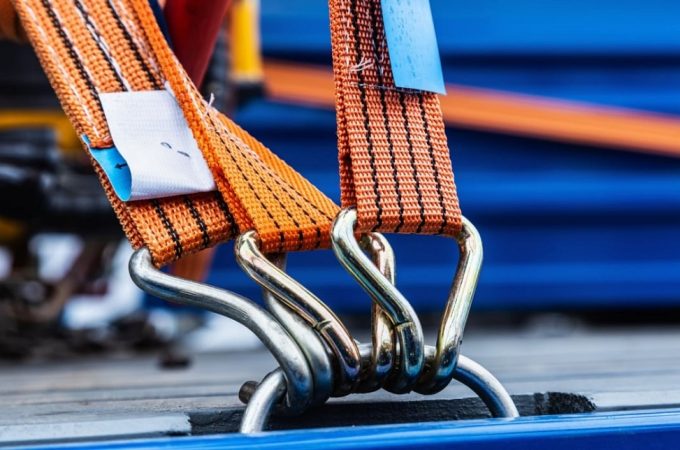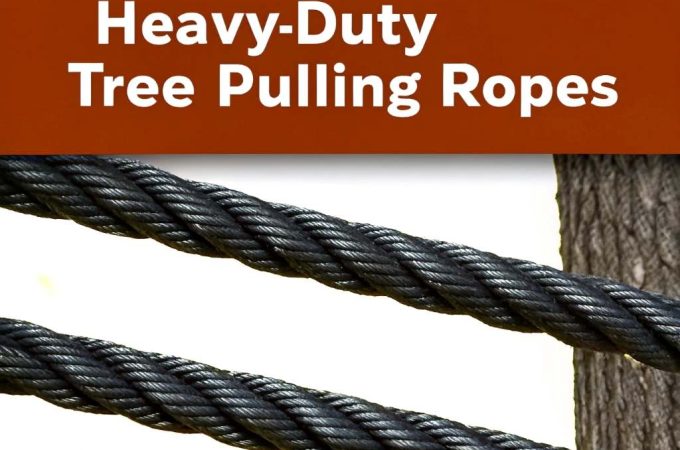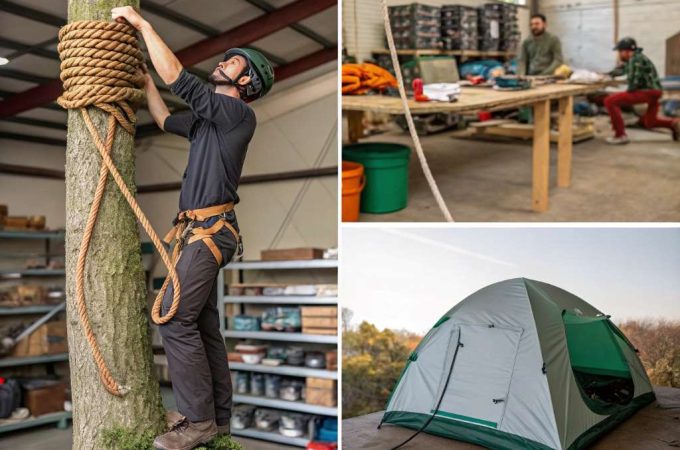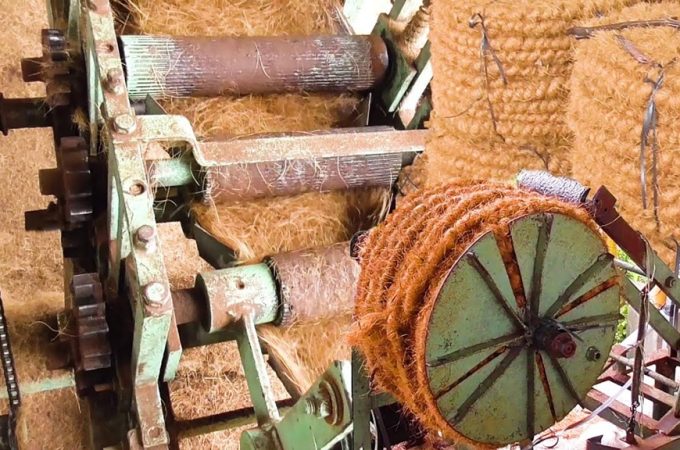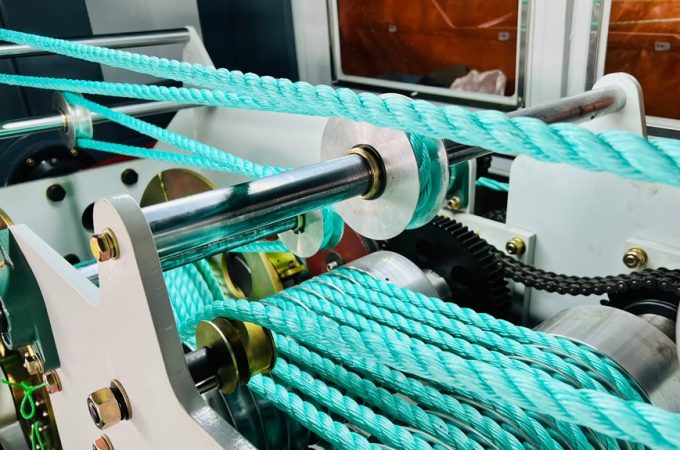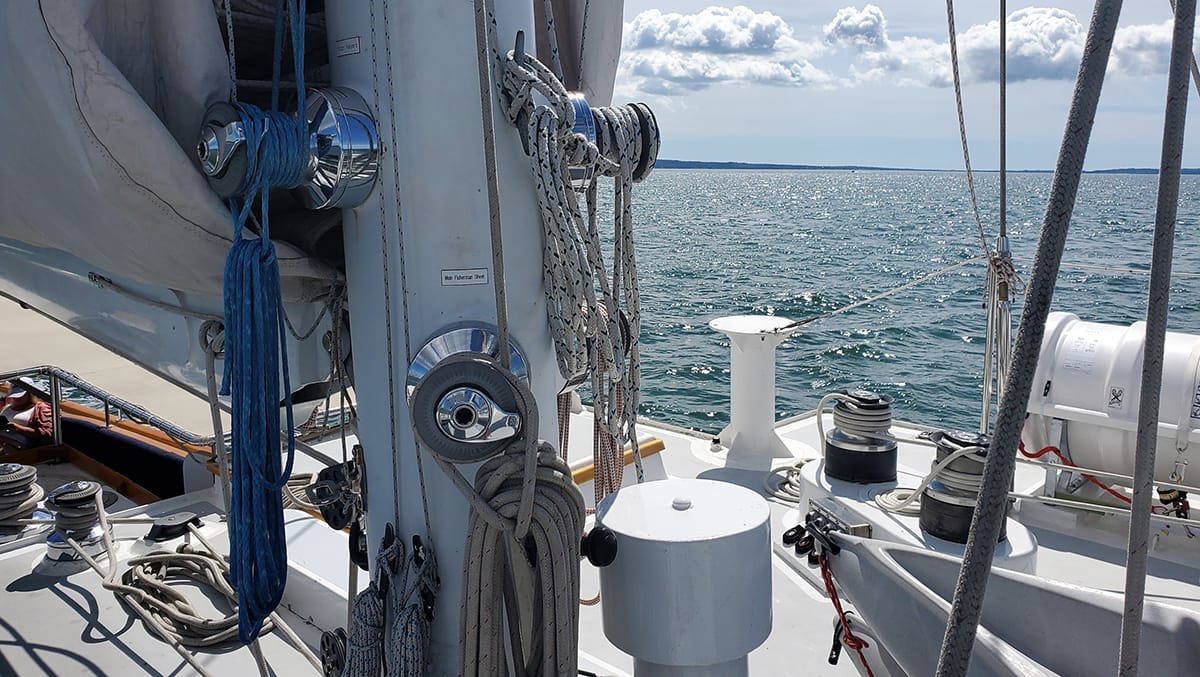
Anchor Rope Knot: Master the Art of Seamanship
The anchor rope knot is a secure and essential technique used to fasten the rope to an anchor securely. A properly tied anchor rope knot ensures that the anchor stays in place, preventing the boat from drifting away.
Contents at a Glance
ToggleThis knot is crucial for safety and stability while boating or anchoring. Mastering the anchor rope knot is essential for any sailor, as it ensures the vessel remains secure and in position. Understanding the different types of anchor rope knots, such as the bowline knot or the cleat hitch, allows boaters to adapt to various situations and ensure safety on the water.
Therefore, learning and implementing the correct anchor rope knot is vital for all boaters.
Anchor Rope Knot: Essential Techniques
An essential aspect of boat and marine safety is the proper use of anchor rope knots. Whether you’re a seasoned sailor or a newbie, mastering anchor rope knots is crucial for a secure and hassle-free sailing experience. In this blog post, we will discuss the importance of mastering anchor rope knots, key properties of a reliable anchor rope knot, and the variance in knot techniques based on rope types.
The Importance Of Mastering Anchor Rope Knots
Mastering anchor rope knots is paramount in boating and sailing activities. A well-tied anchor rope knot ensures that your boat remains firmly anchored, preventing drift, and offering stability even during rough weather conditions. On the other hand, a poorly tied knot can lead to slippage, loss of equipment, and potential accidents. By mastering anchor rope knots, you can have peace of mind knowing that your boat will stay securely anchored, allowing you to enjoy your time on the water with confidence.
Key Properties Of A Reliable Anchor Rope Knot
When it comes to anchor rope knots, reliability is of utmost importance. A reliable anchor rope knot possesses certain characteristics that make it capable of withstanding the forces experienced on the water. Here are some key properties to look for in a reliable anchor rope knot:
- Strength: A reliable knot should have excellent strength to withstand the tension exerted by wind, currents, and waves. It should not easily slip or come undone, providing a secure anchor point for your vessel.
- Security: The knot should be secure and resistant to jamming, even under extreme conditions. This ensures that you can easily untie the knot when needed, without any unexpected surprises.
- Easy to tie and untie: An ideal anchor rope knot should be easy to tie and untie, allowing for quick anchor deployment and retrieval. This way, you can save valuable time and effort, especially during emergency situations.
- Minimal stress on the rope: A reliable knot should distribute the load evenly across the rope, minimizing stress concentration points. This helps in prolonging the lifespan of the rope and ensuring its durability over time.
Variance In Knot Technique Based On Rope Types
The type of rope used for anchoring can determine the best knot technique to employ. Different rope materials offer varying levels of strength, flexibility, and grip, necessitating the use of specific knots. Here’s a brief overview of the knot techniques based on common rope types:
| Rope Type | Recommended Knot Technique |
|---|---|
| Nylon Rope | Figure Eight Knot or Bowline Knot |
| Polypropylene Rope | Double Fisherman’s Knot or Anchor Bend |
| Polyester Rope | Cleat Hitch or Round Turn and Two Half Hitches |
| Dyneema Rope | Mooring Hitch or Taut-Line Hitch |
Bear in mind that these are general recommendations, and it’s crucial to consult manufacturer guidelines and seek professional advice when selecting the appropriate knot technique for your specific rope type.
Ultimately, mastering anchor rope knots is an indispensable skill for any boating enthusiast. By understanding the importance of these knots, recognizing the key properties of reliable ones, and adapting the technique to match your rope type, you’ll ensure a safe and enjoyable time on the water.
Choosing The Right Rope For Anchoring
When it comes to anchoring your boat, one crucial aspect that should not be overlooked is choosing the right rope. The anchor rope plays a vital role in ensuring the safety and security of your boat while it is moored. Understanding the different types of ropes available, along with their attributes and how they relate to knot security, is essential in making an informed decision. Additionally, considering factors such as the environment, boat size, and anchor type can help you select a rope that is well-suited for your specific needs. In this section, we will explore each of these aspects in detail, ensuring that you have a solid understanding of what to look for when choosing the right rope for anchoring.
Understanding Rope Materials And Their Attributes
When it comes to selecting the right rope, you’ll first want to consider the materials from which they are made. Different materials offer varying levels of strength, durability, and resistance to abrasion, making them suitable for different purposes. Here are some common materials used in anchor ropes:
| Material | Attributes |
|---|---|
| Nylon | Durable, strong, and elastic. Ideal for absorbing shock loads and suitable for most anchoring situations. |
| Polypropylene | Lightweight, floats on water, and resistant to mildew and rot. Best for temporary or lightweight applications. |
| Polyester | Durable, low stretch, and resistant to UV rays. Well-suited for long-term anchoring and harsh environments. |
The Relationship Between Rope Diameter, Length, And Knot Security
The diameter and length of the rope you choose play a significant role in the security of the knots you tie. Thicker ropes generally offer greater strength, but they may require larger knots, which could be challenging to tie with precision. On the other hand, thinner ropes are more flexible and easier to handle, but they may compromise the overall strength of the anchor system. It’s crucial to strike a balance between diameter, length, and knot security to ensure a reliable anchoring setup.
Conditions Affecting Rope Choice: Environment, Boat Size, And Anchor Type
Several conditions should be taken into account when selecting the appropriate rope for anchoring. The environment in which you will be boating – whether it’s freshwater, saltwater, or a combination – will determine the level of resistance required against elements such as UV rays, saltwater corrosion, and abrasion. Boat size is another factor to consider since larger vessels will require more robust ropes to handle the increased weight and anchor load. Additionally, the type of anchor you use, whether it’s a plow, fluke, or claw, can dictate the rope characteristics needed for optimal performance.
By carefully considering the environment, boat size, and anchor type, you can ensure that the rope you choose will withstand the conditions you’ll encounter on the water and provide reliable anchoring for your boat.
Tying The Anchor Rope Knot: Step By Step
When it comes to anchoring your boat securely, tying the anchor rope knot properly is of utmost importance. This guide will walk you through the step-by-step process, ensuring that your anchor rope is fastened securely and your boat stays safely moored. Before we dive into the detailed walkthrough of the standard anchoring knot, let’s start with some essential preparation and safety checks.
Preparation: Laying Out Your Rope And Safety Checks
Before you begin tying the anchor rope knot, make sure you have laid out your rope properly to avoid tangles and knots. Lay it in a straight line, ensuring it is untwisted and easy to work with. Additionally, it’s crucial to check the condition of your rope for any signs of wear and tear. Any frayed or damaged areas should be marked and avoided during the knot tying process to ensure your safety.
To further ensure your safety, inspect the anchor and its attachment points for any signs of damage or weakness. Make sure the anchor is securely fastened to its line and that all hardware is in good working condition. Checking your boat’s cleats or anchor points to ensure they are strong enough to handle the strain is vital to keep your boat secure.
Detailed Walkthrough Of The Standard Anchoring Knot
Now that you’ve prepared your rope and conducted safety checks, it’s time to dive into the detailed walkthrough of the standard anchoring knot. This knot is commonly known as the “Bowline Knot,” which is renowned for its strength and reliability. Follow these simple steps to tie the anchor rope knot:
- Make a small loop in the rope, ensuring the end is on top of the standing part.
- Pass the end of the rope through the loop, going under the standing part.
- Bring the end of the rope back over the top and insert it into the loop.
- Pull the standing part of the rope to tighten the knot.
- Ensure the knot is snug and secure by giving it a gentle tug.
The standard anchoring knot, or Bowline Knot, is known for its stability and ease of untying. It forms a secure loop that will hold fast under tension, providing you with peace of mind while your boat is anchored.
Common Mistakes To Avoid When Tying Anchor Rope Knots
While tying the anchor rope knot may seem straightforward, there are common mistakes that can affect its effectiveness. Here are a few mistakes to avoid:
- Not properly tightening the knot: Ensure that the knot is snug and secure, as a loose knot can come undone.
- Misplacing the end of the rope within the loop: Double-check that the end of the rope passes under the standing part and is correctly inserted into the loop.
- Overlooking wear and tear: Regularly inspect your anchor rope for signs of damage and replace it if necessary to maintain its strength and reliability.
- Ignoring safety checks: Always inspect your anchor and attachment points before tying the knot to prevent accidents or equipment failure.
By avoiding these common mistakes and following the step-by-step process, you can ensure that your anchor rope knot is secure, providing you with a worry-free boating experience.
Anchor Rope Knot: Master The Art Of Seamanship
Anchor Rope Knot: Master the Art of Seamanship
Seamanship is a skill that every sailor, boater, or water enthusiast must possess. It encompasses various aspects of maritime knowledge and includes proficiency in handling equipment, navigation techniques, and perhaps most importantly, the mastery of anchor rope knots. Whether you’re cruising along calm waters or tackling rough seas, having a firm grasp of anchor rope knots can be the difference between anchoring success and a disastrous mishap. In this article, we will delve into the importance of mastering knots in seamanship and explore real-life scenarios where anchor rope knot proficiency is crucial. Additionally, we will highlight the significance of practicing knots to build muscle memory and confidence, ensuring that every seafarer can navigate the waters with ease and precision.
How Mastering Knots Contributes To Seamanship
When it comes to seamanship, knowing how to tie and untie knots is an essential skill that can make all the difference in your sailing adventures. Anchoring is a fundamental part of boating, providing stability and security to your vessel while you explore serene waters or find shelter during adverse weather conditions. A securely tied anchor rope knot is crucial in keeping your boat in place.
Mastering knots contributes to seamanship in several ways:
- Ensures safety: A faultlessly executed anchor rope knot eliminates the risk of your boat drifting away unexpectedly, reducing the chances of accidents and collisions.
- Enhances maneuverability: Knowing how to tie proper knots allows you to adjust the length and position of the anchor rope efficiently, which is essential when navigating tight spaces or changing the direction of your vessel.
- Increases efficiency: Seamlessly tying and untying knots saves time and minimizes the potential frustration that can arise from struggling with tangled ropes or poorly secured knots.
- Promotes confidence: Proficiency in knots boosts your self-assurance, allowing you to approach anchoring situations with calmness and certainty, even in challenging conditions.
Real-life Scenarios Where Anchor Rope Knot Proficiency Is Crucial
Anchor rope knot proficiency is not only necessary for routine anchoring situations but also critical in various real-life scenarios. Consider the following situations where a failure to execute reliable anchor rope knots could have severe consequences:
1. Adverse weather conditions:
Imagine finding yourself in the midst of a sudden storm or turbulent waves. In such circumstances, inadequate or poorly tied knots may cause your anchor to drag or break loose, leaving you without a stable anchor, and potentially allowing your vessel to drift into dangerous areas or collide with other boats.
2. Emergency situations:
In emergencies, such as engine failure or medical emergencies, quickly anchoring your boat is essential for ensuring the safety of all on board. Having the knowledge and ability to tie a secure anchor rope knot efficiently can provide a much-needed lifeline, allowing you to stabilize your vessel and buy precious time while you handle the emergency at hand.
3. Nighttime navigation:
When navigating in darkness, accurately positioning your vessel is paramount. A strong and reliable anchor rope knot ensures that your boat remains fixed in place, preventing any unwanted movement that can lead to collisions with unseen obstacles or other vessels.
By mastering anchor rope knots, you equip yourself with the skills and knowledge to handle unforeseen circumstances and navigate any situation with confidence.
Practicing Knots: Building Muscle Memory And Confidence
As with any skill, practice is key to becoming proficient in tying anchor rope knots. Regularly practicing knots not only builds muscle memory but also instills confidence in your ability to tackle any anchoring scenario. Consistency in practicing knots enables you to:
- Improve technique: Repeatedly performing anchor rope knots helps refine your technique, allowing you to tie knots more quickly and efficiently.
- Foster muscle memory: Through consistent practice, you develop muscle memory, enabling you to tie knots instinctively, even in challenging conditions or high-pressure situations.
- Address weaknesses: Practicing knots exposes any weaknesses or areas for improvement, allowing you to identify and correct them before they become potential vulnerabilities.
- Build confidence: Each successful knot tied during practice reinforces your belief in your abilities, instilling a sense of confidence that will serve you well when facing anchoring scenarios in real-life situations.
Remember, proficiency in anchor rope knots is not achieved overnight. Dedicate time to practice regularly, and soon enough, manipulating ropes, tying knots, and anchoring your vessel will become second nature. Seamanship relies on mastery, and the art of knots is fundamental in becoming a seasoned sailor.
Advanced Knots For Experienced Mariners
If you’re an experienced mariner, you understand the importance of using the right knot for different anchoring conditions. While standard anchoring knots may suffice for most situations, there are times when more complex knots are required to ensure the safety and stability of your vessel. In this article, we will introduce you to advanced knots specifically designed for specific conditions, discuss when to use them, and provide step-by-step guidance on how to tie them effectively.
Introduction To More Complex Knots For Specific Conditions
When it comes to anchoring your boat, it’s not always as simple as tying a basic knot. Depending on the conditions you encounter, such as strong currents, high winds, or rough seas, you need to be equipped with advanced knots that provide exceptional strength and security. These knots are specifically designed to hold under intense pressure and ensure your anchor stays firmly in place, giving you peace of mind even in challenging situations.
- The Bowline on a Bight: Ideal for creating a secure loop that can handle extreme loads, this knot is useful when anchoring in areas with strong currents or for attaching a drogue to control boat speed.
- The Anchor Bend: Known for its simplicity and reliability, this knot is perfect for attaching the anchor to the rope securely. Its strong grip ensures that the anchor doesn’t slip or come loose even during rough weather conditions.
- The Taught-Line Hitch: This adjustable knot is invaluable when anchoring in areas with changing tides or winds. It allows you to easily adjust the tension on the rope while maintaining a secure hold.
When To Use Advanced Knots Over Standard Anchoring Knots
While standard anchoring knots can handle most everyday situations, there are certain circumstances where advanced knots are necessary. The decision to use an advanced knot should be based on the specific conditions you’ll be facing while anchoring. Here are a few scenarios where advanced knots may be preferred:
- Strong currents: When anchoring in areas with strong currents, advanced knots like the Bowline on a Bight can provide added strength and stability to keep your vessel secure.
- High winds: In windy conditions, the Anchor Bend is exceptionally reliable, ensuring that the anchor remains securely attached to the rope.
- Rough seas: The Taught-Line Hitch is an excellent choice for rough seas, as it allows you to adjust the tension on the rope to accommodate changing conditions.
Step-by-step Guidance On Tying Advanced Anchoring Knots
Tying advanced anchoring knots requires precision and practice. Here’s a step-by-step guide on how to tie the knots mentioned above:
The Bowline on a Bight
- Create a loop by folding the rope in half.
The Anchor Bend
The Taught-Line Hitch
Remember, practice is key to mastering these advanced knots. Familiarize yourself with the steps and practice tying them before you encounter challenging anchoring situations.
Ensuring Knot Efficiency And Safety
When it comes to boating and maritime activities, the efficiency and safety of knots cannot be understated. Properly tying and securing anchor ropes is crucial to prevent accidents and ensure smooth operations. In this article, we will explore the importance of regular maintenance, inspecting knots for wear and potential failure points, and the drills and tests you can perform to ensure knot reliability at sea.
Regular Maintenance Of Ropes And Knots
Regular maintenance is key to keeping your anchor ropes in optimal condition. Over time, ropes can get dirty, weakened by exposure to weather elements, or frayed due to frequent use. To maintain the efficiency and safety of your knots, it is essential to regularly inspect and take care of your ropes.
Here are some steps you can take for regular maintenance:
- Clean your ropes thoroughly to remove dirt, sand, and salt deposits. This can be done by scrubbing them with a mild detergent and water solution.
- Inspect the ropes for any signs of wear, such as fraying, thinning, or disintegration. Replace any damaged sections immediately to prevent failure.
- Apply a suitable rope lubricant to keep the fibers supple and prevent excessive friction. This will extend the lifespan of the ropes and maintain knot strength.
Inspecting Knots For Wear And Potential Failure Points
Regularly inspecting your knots is equally important as maintaining your ropes. Even the strongest rope can fail if the knot is compromised. By keeping an eye out for wear and potential failure points, you can identify and rectify any issues before they lead to accidents or equipment damage.
Here are some tips for inspecting your knots:
- Check for any signs of slippage or loosening. A properly tied knot should stay secure even under strain.
- Look for any fraying, excessive wear, or damage on the rope near the knot. These weak points can compromise the overall strength and stability of the knot.
- Test the knot by gently pulling on it to ensure it holds fast. If there is any sign of weakness, retie the knot using proper techniques.
Drills And Tests To Ensure Knot Reliability At Sea
Before setting off on your boating adventure, it is essential to perform some drills and tests to ensure the reliability of your knots at sea. These exercises will help you identify any weaknesses or flaws in your knot tying technique.
Here are some drills and tests you can conduct:
- Practice tying and untying different types of knots. This will help you improve your knot-tying skills and familiarize yourself with various knot techniques.
- Simulate real-life scenarios by retying knots under simulated tension and time constraints. This will train you to tie knots quickly and efficiently in high-pressure situations.
- Perform pull tests on knots using a suitable load-testing device. This will provide you with a realistic assessment of knot strength and reliability.
By regularly maintaining your ropes, inspecting knots for wear, and conducting drills and tests, you can ensure the efficiency and safety of your anchor rope knots. Don’t overlook these essential steps in maintaining your boat’s safety and security while out at sea.
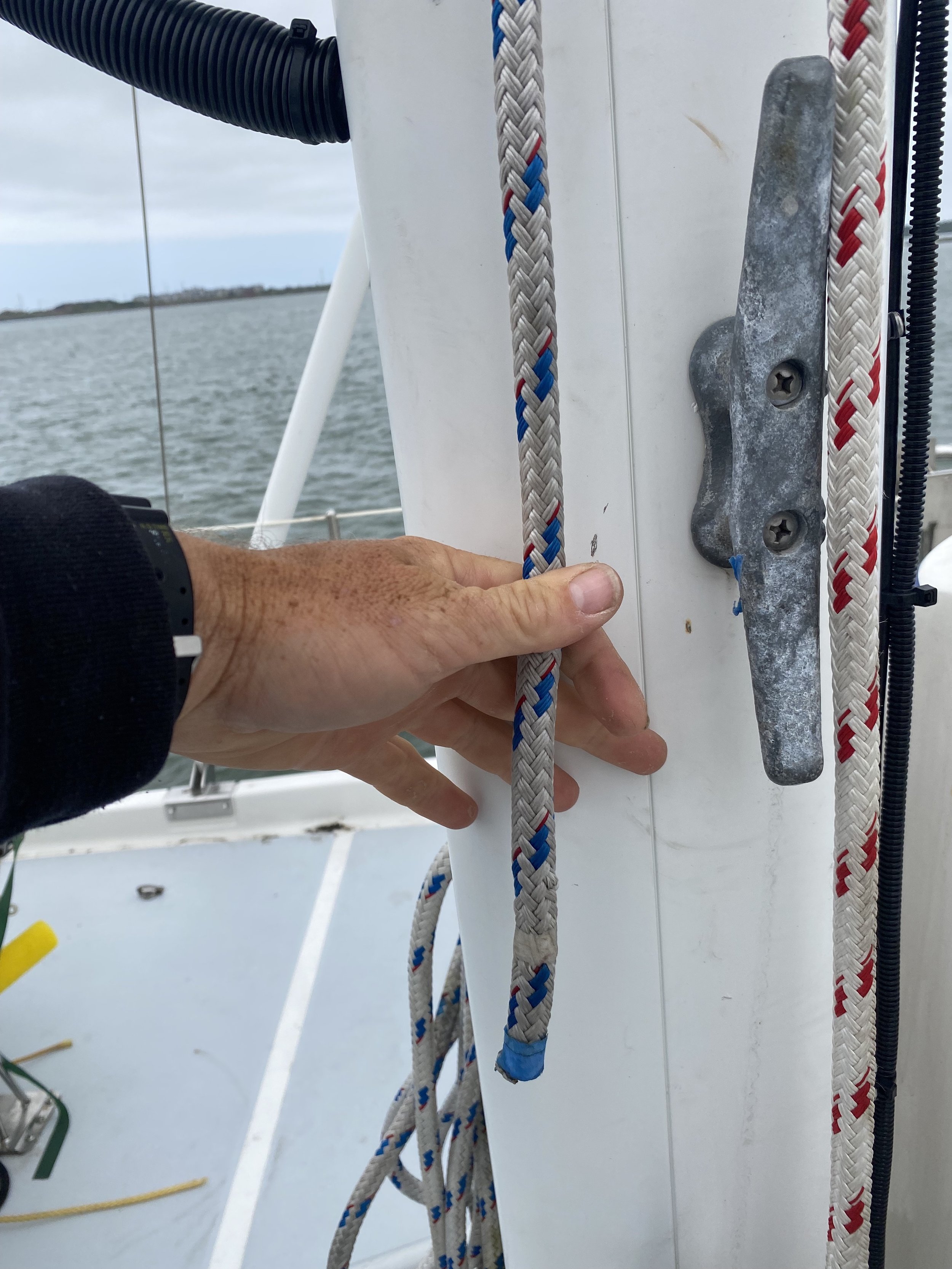
Credit: www.griffinbayadventures.com
Frequently Asked Questions For Anchor Rope Knot
What Are The Different Types Of Anchor Rope Knots?
There are several types of anchor rope knots commonly used, including the figure-eight knot, bowline knot, cleat hitch, and anchor bend. Each knot has its own advantages and applications depending on the specific needs of the boater or sailor.
How Do I Tie An Anchor Rope Knot?
To tie an anchor rope knot, start by creating a loop with the rope and passing the end through the loop. Then, make a second loop with the free end and pass it through the first loop. Finally, tighten the knot by pulling both ends of the rope.
Practice and repetition will help you master this essential skill.
What Is The Most Secure Anchor Rope Knot?
The bowline knot is considered one of the most secure anchor rope knots. It forms a fixed loop that does not slip or come undone under tension. This knot is reliable and commonly used for securing boats and anchors, giving boaters peace of mind when mooring or anchoring.
Conclusion
To wrap up, mastering the art of tying an anchor rope knot is essential for any boat owner or enthusiast. Whether you’re a seasoned sailor or just starting out, understanding different knots and their purposes is crucial for a safe and enjoyable experience on the water.
With practice and perseverance, you’ll soon be confidently securing your boat with the perfect knot, giving you peace of mind and ensuring that your vessel remains steady and secure. So, why wait? Start learning and practicing these knots today and enhance your boating skills like a pro!

